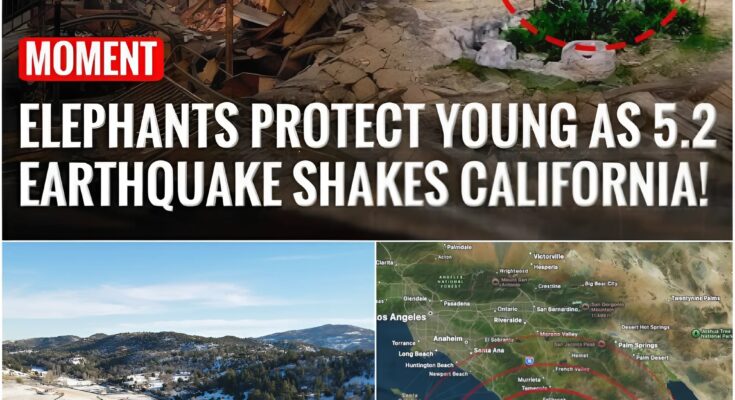A powerful earthquake measuring 5.2 on the Richter scale shook San Diego, California, and surrounding areas at exactly 10:08 a.m. local time (18:00 GMT) on April 14. The tremor was strong enough to send waves of panic through communities across Southern California, reminding residents of the region’s seismic vulnerability.

The U.S. Geological Survey (USGS) confirmed that the epicenter was located near the small mountain town of Julian, nestled in the Cuyamaca Mountains, roughly an hour northeast of downtown San Diego. The quake was felt over a broad area, including parts of Los Angeles and even as far as the Mexican border, though no serious damage or injuries were reported in the immediate aftermath.
Two hours following the initial shock, local authorities stated that they had not received any reports of casualties or major structural damage. However, emergency services remained on high alert as smaller aftershocks continued to ripple through the region. According to the USGS, several minor tremors were recorded in the vicinity, which is common following a quake of this magnitude.

Notably, just seconds before the ground began to shake, the USGS issued an emergency alert through its ShakeAlert system, warning residents to take immediate protective action. “Drop, cover, and hold on. Protect yourself,” the warning read. The alert system, which uses a vast network of underground seismometers and sensors, gave residents crucial seconds to prepare.
For Kevin Manaugh, a California resident having breakfast at the time, the warning made all the difference. “I received the alert just in time,” he said. “I quickly got under a door frame. It wasn’t long, but it was enough to react.” Stories like his are a testament to the growing effectiveness of early-warning systems.

Dr. Robert de Groot, leader of the USGS ShakeAlert project, told the BBC that these sensors work “in a flash” to detect the first movements of an earthquake, helping to send alerts before the strongest waves arrive. “The more time we can give people, even if it’s just seconds, the better the chances they have to take action,” he said.
Despite the absence of significant destruction, the quake served as a stark reminder of California’s ever-present seismic risk. Residents are once again being encouraged to review their emergency preparedness plans and stay vigilant for future quakes.
As of now, USGS continues to monitor the region closely, while seismologists analyze the quake’s characteristics and its potential link to larger fault systems nearby. The event may have passed without major incident, but it underscored the importance of staying ready in earthquake-prone California.



